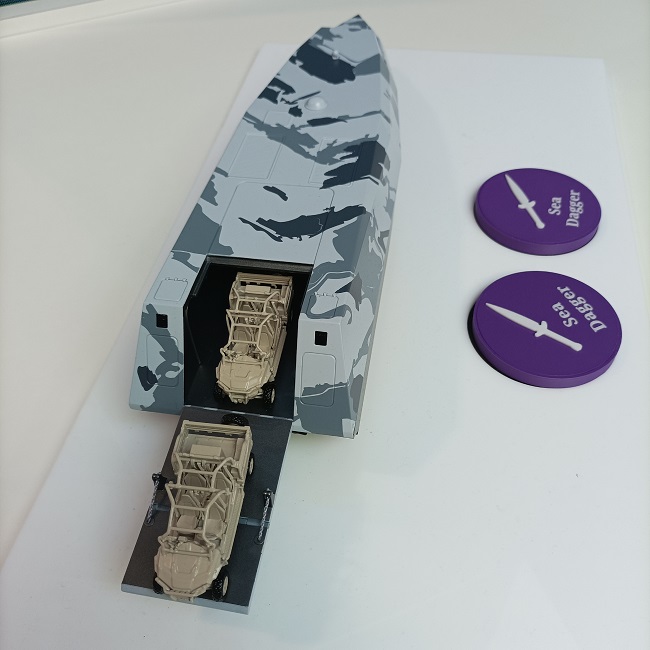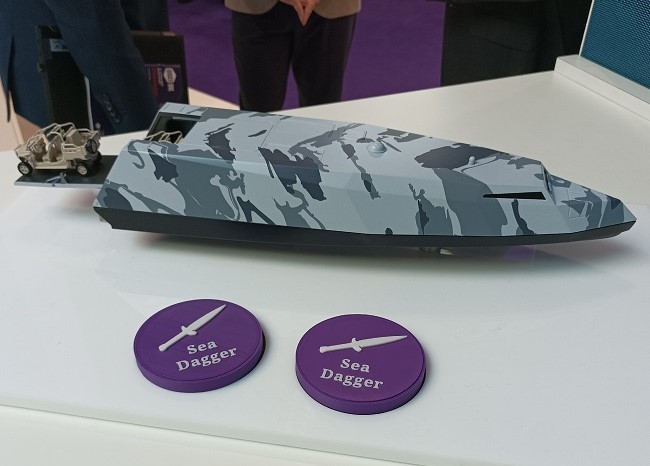
At DSEI, Leidos has presented its SEA DAGGER design for the Commando Insertion Craft, a key piece in the modernisation of the Royal Marines Commando Force. The CIC, destined to be the replacement of the LCVP Mk 5, is required to be a far more survivable boat, coming with low observability characteristics, very high speed and long range enabling insertion from great distance over the horizon.
The CIC is to prioritize the ability to serve as a multi-role and combat platform over pure carrying capacity and is likely to be armed to double as a fast combat boat. The launch of drones from CIC will enable the new platform to contribute more widely to the fight in the littoral.
SEA DAGGER is capable of speeds of up to 40 knots (presumably in unladen conditions) and would move at speeds of 30 knots over a range of as many as 350 nautical miles.
Apart from its stealthy design and low silhouette, it is most notable for its stern beaching approach. The landing craft approaches the beach stern first, to be able to apply maximum power to regain the open sea after unloading. The flat bottomed landing craft currently in use, mainly the LCU Mk-10 but also the LCVP Mk 5, can become stuck in very shallow waters and that’s the main driver for the continued use of the Beach Armoured Recovery Vehicle, an MBT-based amphibious vehicle with the power to push landing craft back into deeper water.
The SEA DAGGER must be able, probably also with the use of a bow anchor and windlass, to gain the sea by itself in even the most challenging conditions.
Doors in the top of the boat can be opened to deploy UAVs and effectors carried within the boat, which can be compartimentalized in a modular way and fitted with a variable number of shock-absorbing seats for the landing component.
At DSEI, the SEA DAGGER mock-up model was shown carrying 2 Polaris 4x4 MRZR D4 in the back, sitting abreast, and 8 Marines on shock absorbing seats, to go with the vehicles. Other configurations would see more Marines embarked, in multiples of 12, the new size of the Strike Squad for the Marines.

The SEA DAGGER would have an extensive communications suite to fully connect within the Royal Navy new “StrikeNet”, with VHF, UHF, Satcom and Manet connectivity down to the ATAK terminals of the single Marines.
Leidos markets the SEA DAGGER as both designed and manufactured in the UK and promises to be able to have a first boat operational by July 2026.
It is believed the CIC project, which is progressing towards selection and contract award, is looking for a total of 24 landing craft, to be carried in groups of 4 on each of the future Multi Role Strike Ships.
The full list of CIC contenders is not yet clear. BAE Systems is known to have an entry in its Littoral Strike Craft and BMT is probably entering a catamaran offer connected to its CAIMEN line of fast landing craft. Models of said catamaran were included in the “CIC bays” on their ELLIDA STRIKE design proposed for the Multi Role Strike Ship requirement.









.png)
